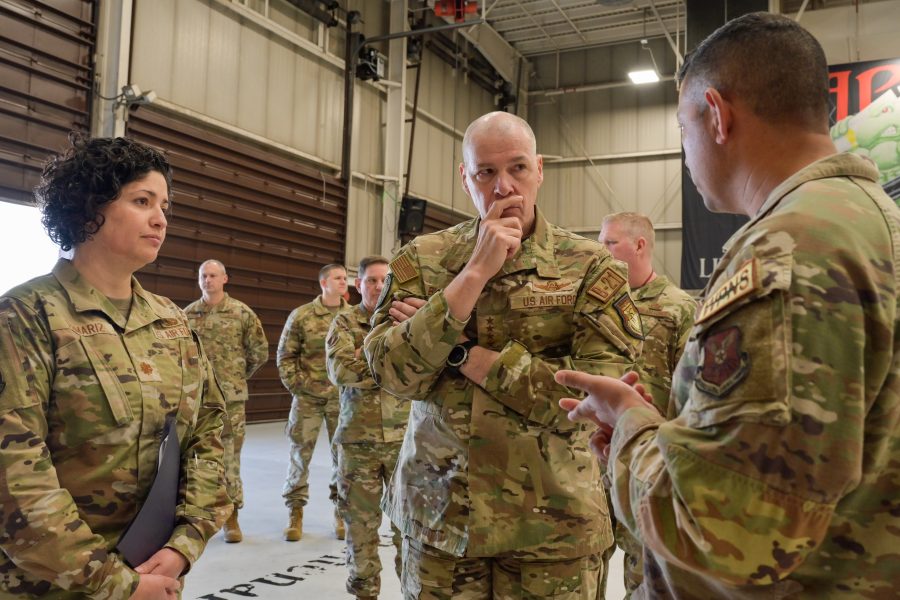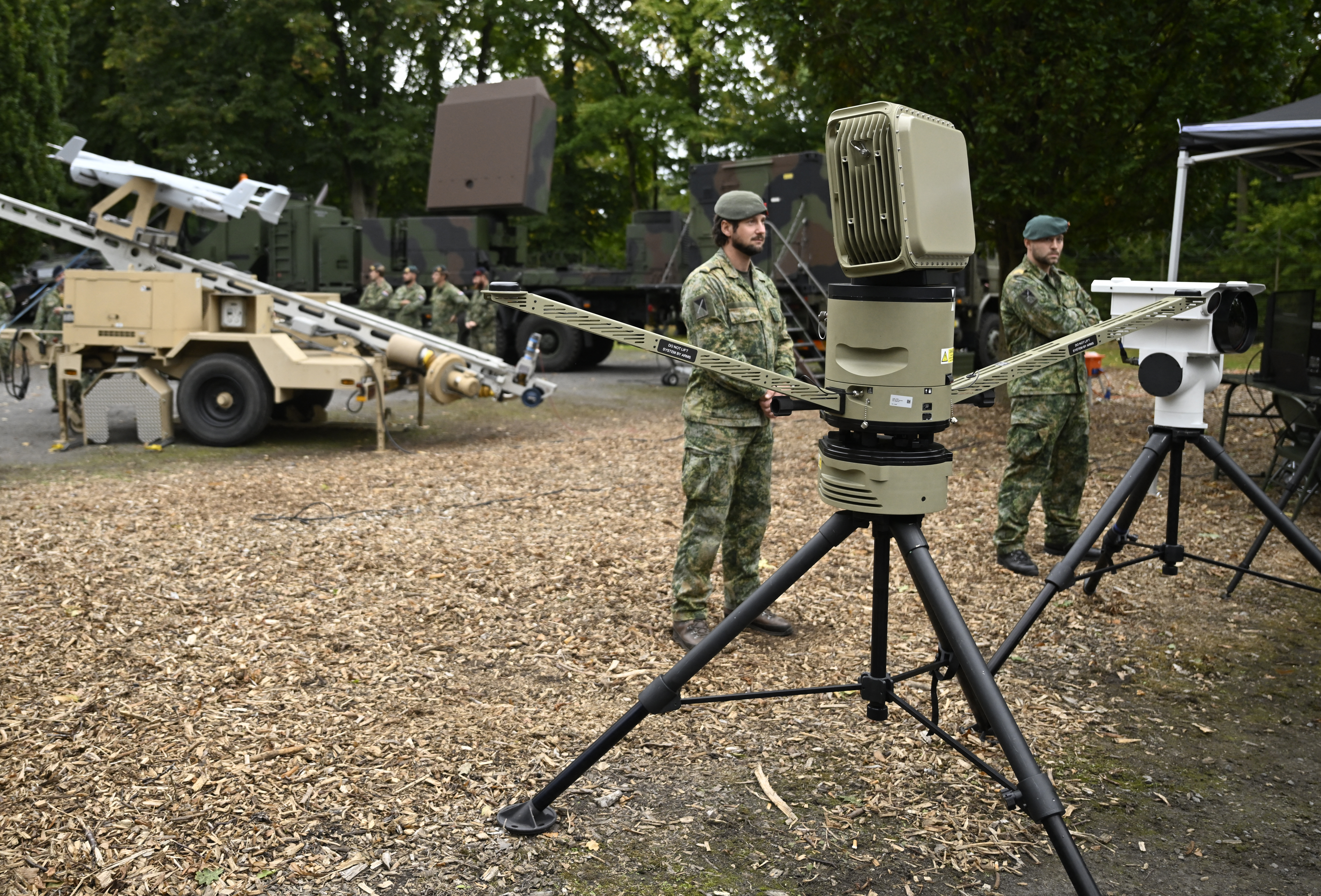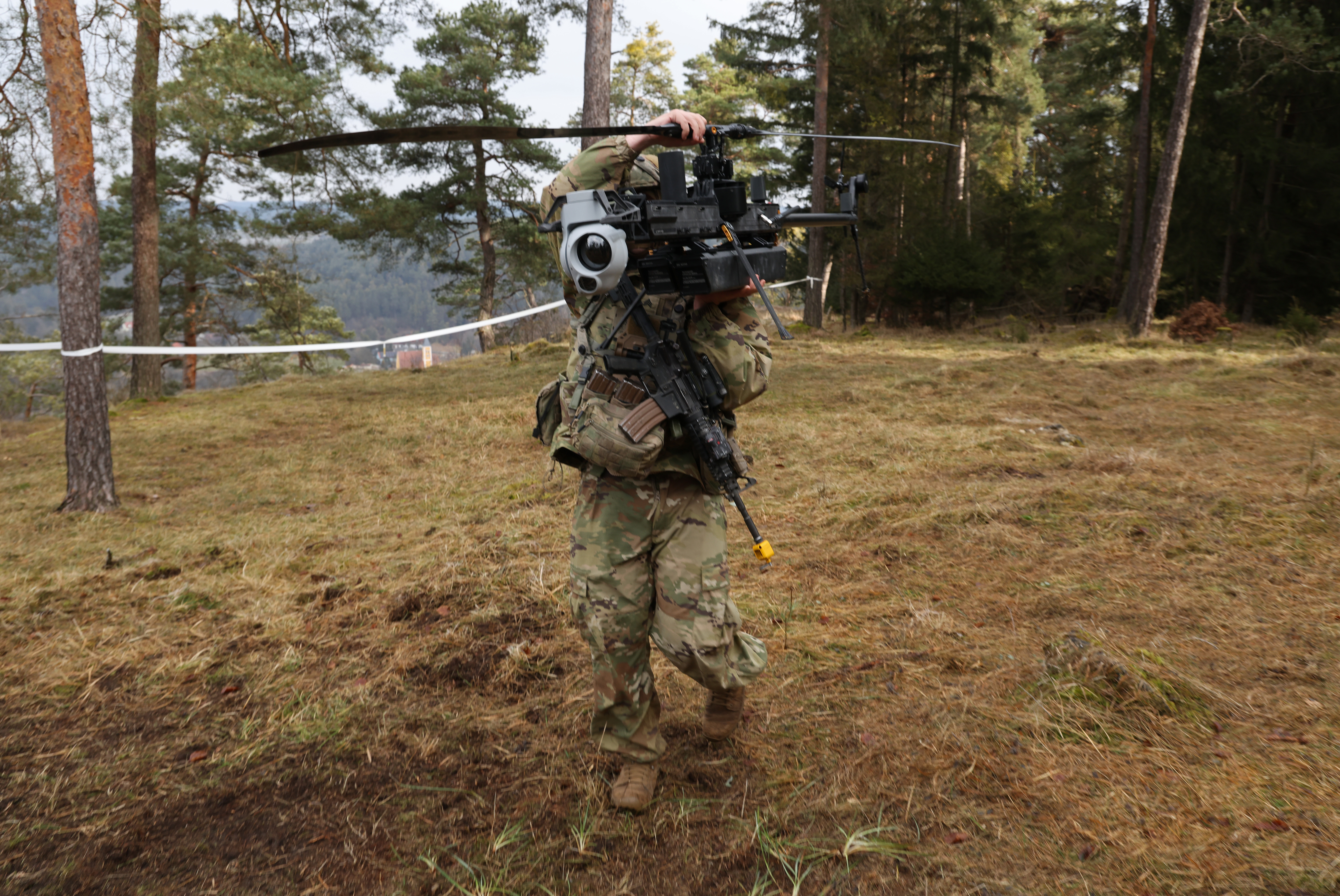
U.S. bomber units are stepping up the pace of combat operations and overseas training as demand for their capabilities grows around the globe, the head of Air Force Global Strike Command said June 5.
“We’ve seen . . . an unyielding demand signal” for each of the Air Force’s three bomber fleets in the past 18 months, Gen. Thomas A. Bussiere said at an event hosted by the Atlantic Council. In some cases, units are dispatched to fly with a foreign ally for “a month or a week,” he said. Other times, an immediate response force deploys with no prior notice.
The Air Force deployed bomber task forces 33 times in 2024, including 10 each in the Indo-Pacific and Europe; six in U.S. Central Command’s jurisdiction, which includes the Middle East and southwest Asia; and several others in North and South America, Bussiere said.
Bomber units have linked up with air forces from Australia, Japan, South Korea, the United Kingdom, Romania, Spain, and Sweden. Some deployments involved round-trip missions, in which they flew from the U.S. and back to participate in overseas training exercises without landing en route.
“Our allies and partners love integrating with our bombers,” Bussier said. They “love having a bomber showing the American flag over their country, or integrating with their air forces, or exercising with their ground forces.”
All three types of bombers—B-1s, B-2s and B-52s—struck targets in Yemen or the Red Sea within the last year, though Bussiere wouldn’t directly comment on those missions. In October, for instance, B-2s from Whiteman Air Force Base, Missouri, struck five hardened underground weapons caches in territory controlled by Houthi rebels in Yemen.
The bomber force has been called up on no-notice activations seven times in the past 18 months, Bussiere said.
“Four or five of them were for combat,” he said. “Two of them were for integration and messaging.”
Six B-2s deployed for several weeks to Diego Garcia, a strategic island outpost in the Indian Ocean, for the small B-2 fleet’s largest and longest overseas deployment so far.
“The combatant commander wanted that capability and capacity in theater, and we generated those bombers, and . . . pushed them out” to CENTCOM for combat missions, Bussiere said.
The operations demonstrate the “capability [and] capacity of long-range strike, payload and range,” Bussiere said. Bombers can hit targets from farther away and use heavier munitions than other platforms.
“I’m a little bit biased, but bombers just send a different message around the world,” he added.
Bussiere also predicted that there will be another new long-range, stand-off strike platform before the B-52 retires, and said the Air Force has long eyed defenses against the kind of drone strike Ukraine used to destroy Russian bombers earlier this month.
The B-52H, he said, continues to be a crucial part of the bomber force. The type is undergoing a “very complex modification” to a new standard configuration, dubbed the B-52J, Bussiere said. The J-model includes replacement of the engines and their pylons, the radar, as well as the communications and navigation systems and other elements of the 63-year-old bomber. The Air Force hopes to keep the B-52s flying for at least 25 more years, a century after they joined the inventory.
Bussiere acknowledged the B-52J has hit development snags, Bussiere said. The cost of its radar upgrade surpassed its baseline by at least 15 percent, triggering a so-called Nunn-McCurdy breach that spurs the Pentagon to investigate and revise a program.
“The modification schedule, cost and production of the radar are different than originally designed when the program started years ago,” he said. But he insisted it’s “not a critical” cost or schedule problem.
“The command has worked very hard to keep the program costs under control” to continue modernizing the radar, he said.
In its nuclear role, the B-52 is designed to fire cruise missiles from afar. It carries the 50-year-old AGM-86B Air-Launched Cruise Missile, but that is to be replaced by the AGM-181 Long-Range Standoff Weapon around 2030. The secretive LRSO will likely continue flying on a long-range strike platform that follows the B-52 when it retires, Bussiere said, adding that the development program is going well.
The new B-21 Raider bomber is also expected to carry nuclear-tipped air-launched cruise missiles as it begins operations by the end of the decade.
Are Bombers Secure?
Bussiere said the Ukrainian drone strike that destroyed at least a dozen Russian bombers June 1 was unsurprising. “That capability and that threat has been evident,” he said, bringing together officials from the Air Force, U.S. Northern Command and U.S. Strategic Command to discuss the threat “probably at least once a month.”
“We are upgrading our capabilities and capacities every day,” he said of counter-drone tools. “The Department [of Defense] is focused on it.”
But he believes the strike’s success will likely push the Air Force to become “a little more aggressive in . . . addressing those types of threats in the continental United States.”
The U.S. military has sought technology that can identify and disable or destroy drones for years. While industry has come up with ways to shoot down quadcopters, confuse them, or zap them with lasers or microwaves, the U.S. has struggled to create cohesive counter-drone policies to protect military and civilian airspace. One hurdle: bringing together the Federal Aviation Administration, Department of Homeland Security and various military entities to jointly address the problem.
The government keeps its likely counter-drone solutions under wraps, Bussiere said, “both to protect our fixed bases as well as our mobile operations.” The Air Force meets with companies to discuss potential options every month.
The threat is real, he said.
“We’re . . . going to respect it, he said. “We’re going to develop capability and capacities and operational techniques to defeat that.”
The post US Bombers Step Up Combat Operations as Demand Grows appeared first on Air & Space Forces Magazine.

Air, Operational Imperative 6: Global Strike, Air Force Global Strike Command, B-1, B-2, B-21, B-52, bombers, Gen. Thomas A. Bussiere, Houthis, LRSO, Red Sea, Russia, Ukraine, Yemen
Air & Space Forces Magazine
[crypto-donation-box type=”tabular” show-coin=”all”]







